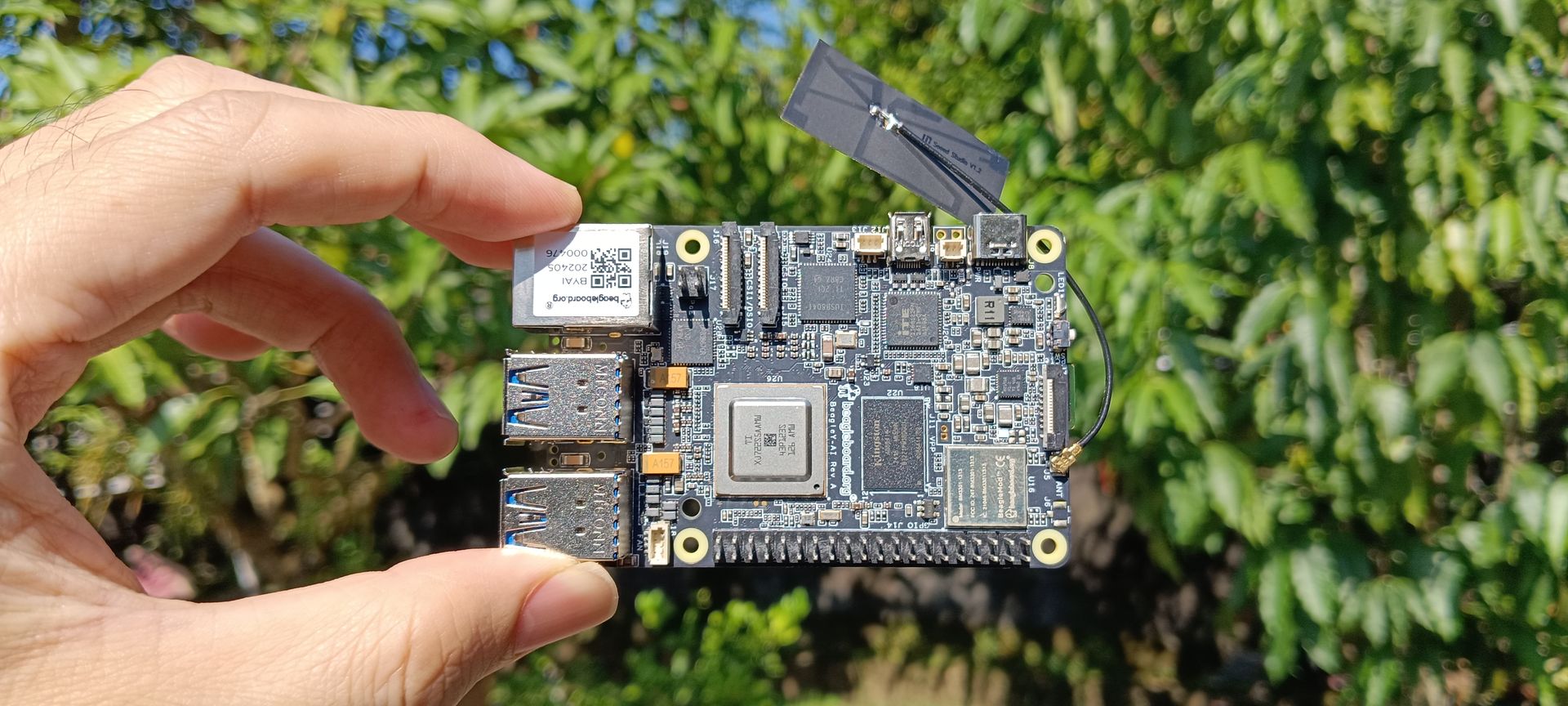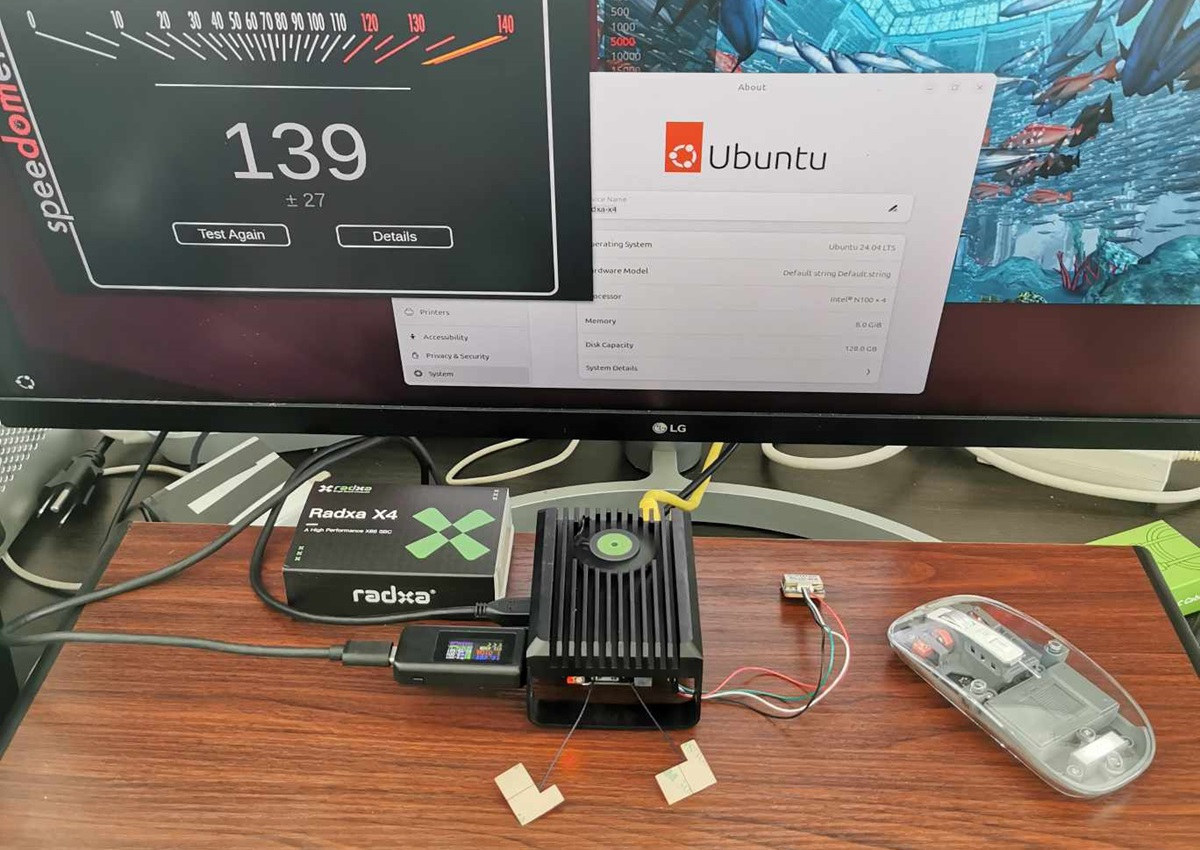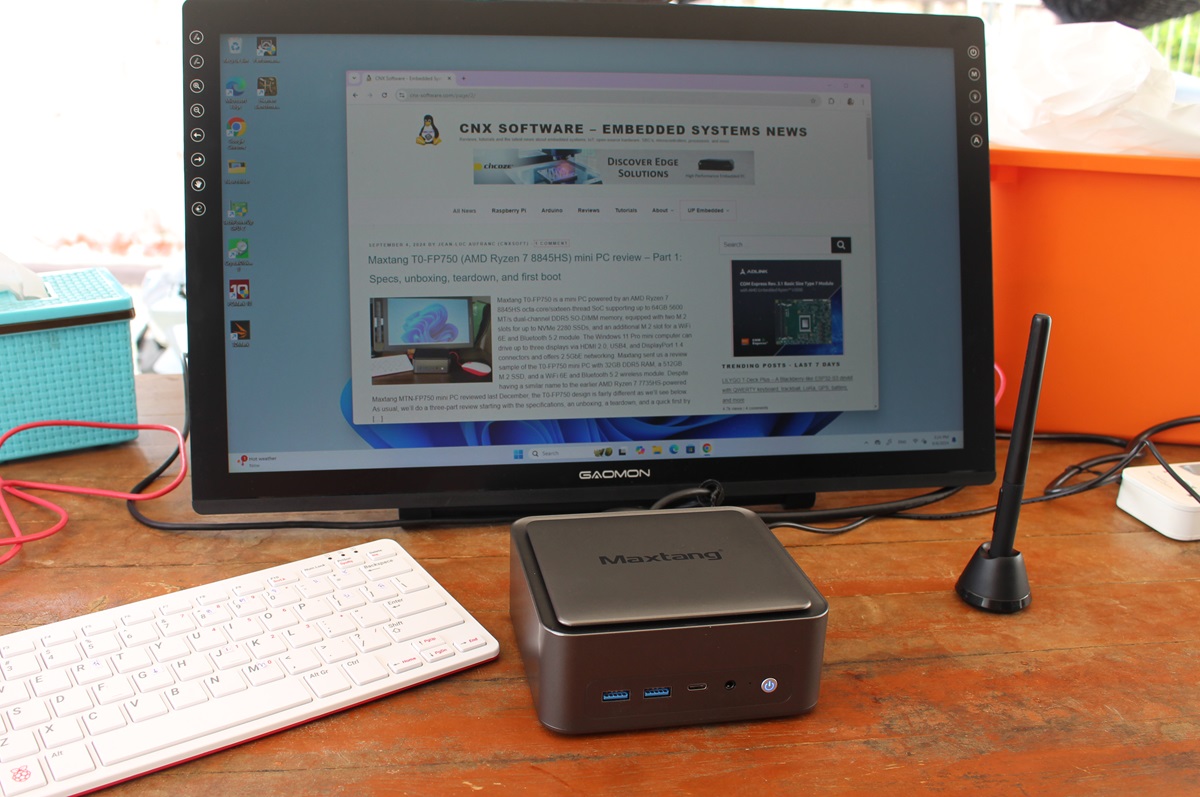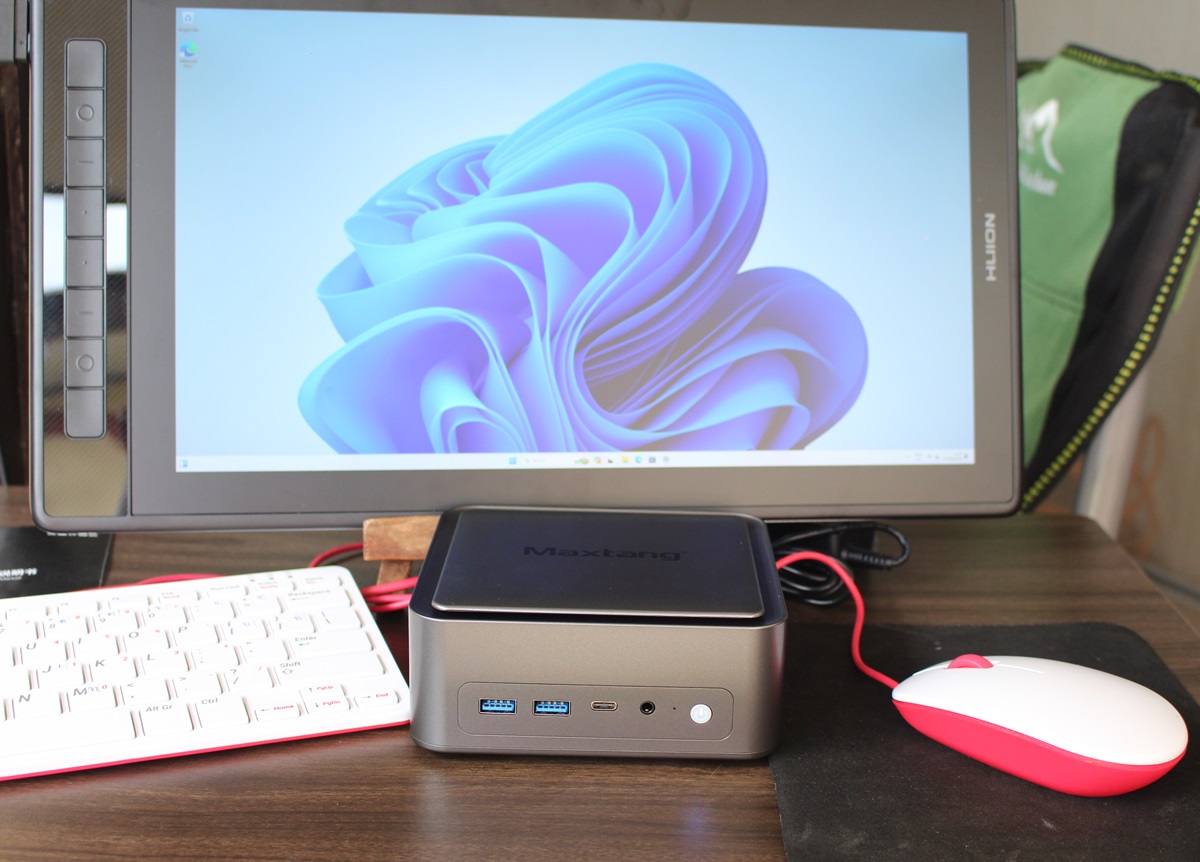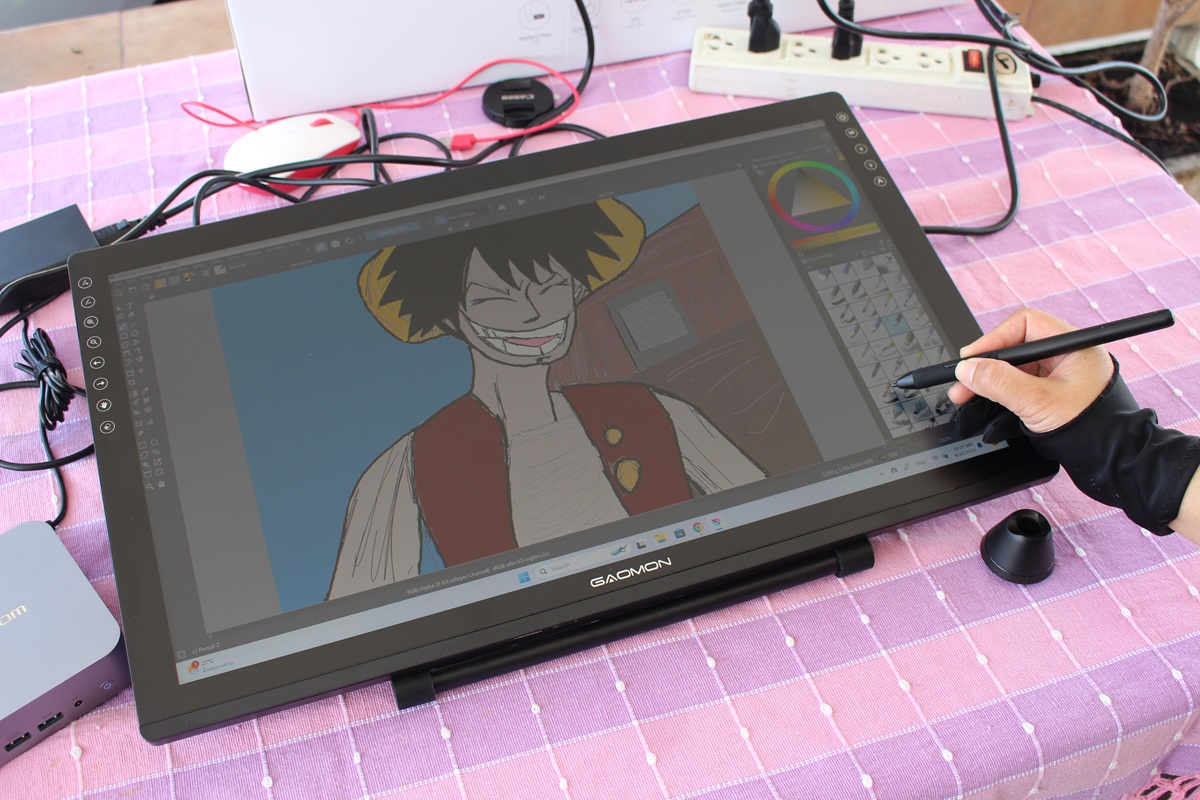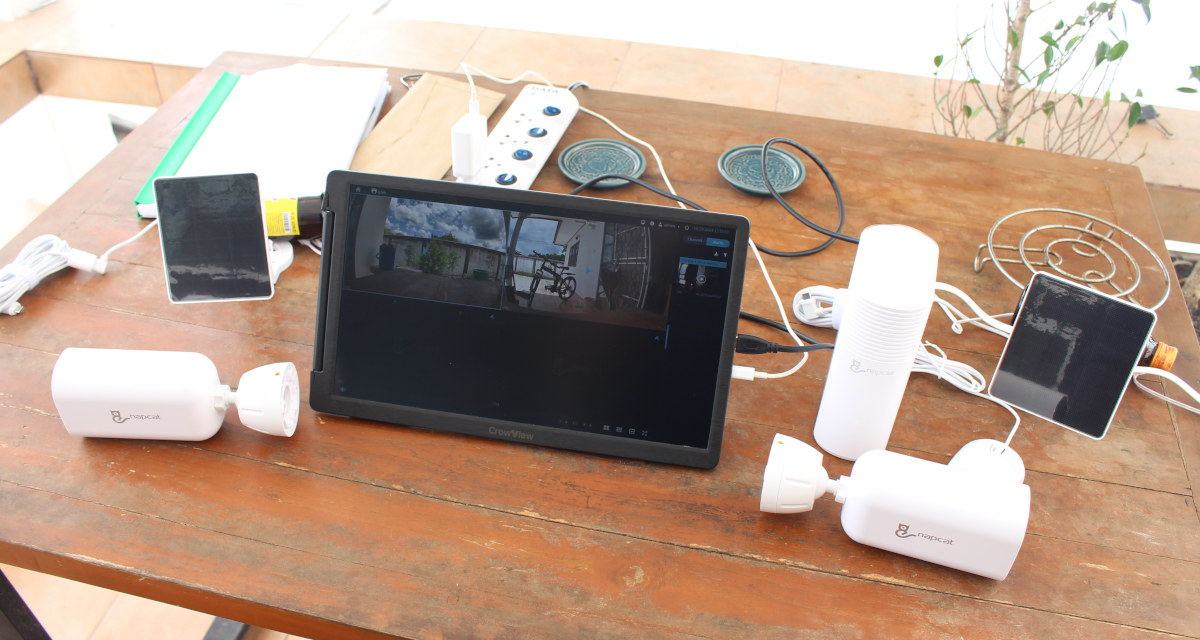Today I’ll be reviewing the BeagleY-AI open-source single-board computer (SBC) developed by BeagleBoard.org for artificial intelligence applications. It is powered by a Texas Instruments AM67A quad-core Cortex-A53 processor running at 1.4 GHz along with an ARM Cortex-R5F processor running at 800 MHz for handling general tasks and low-latency I/O operations. The SoC is also equipped with two C7x DSP units and a Matrix Multiply Accelerator (MMA) to enhance AI performance and accelerate deep learning tasks. Each C7x DSP delivers 2 TOPS, offering a total of up to 4 TOPS. Additionally, it includes an Imagination BXS-4-64 graphics accelerator that provides 50 GFlops of performance for multimedia tasks such as video encoding and decoding. For more information, refer to our previous article on CNX Software or visit the manufacturer’s website. BeagleY-AI unboxing The BeagleY-AI board was shipped from India in a glossy-coated, printed corrugated cardboard box. Inside, the board is protected by […]
Radxa X4 review – An Intel N100 alternative to Raspberry Pi 5 tested with Ubuntu 24.04
We already looked at the Radxa X4 kit featuring an Intel N100 SBC with a design similar to the Raspberry Pi 5 and accessories including a Radxa Power PD 30W power adapter, an NVMe SSD, and a USB-C to USB-C cable, in the first part of the review, before installing Ubuntu 24.04 on the board.
In the second part of the review, we will test Ubuntu 24.04 in more detail with some benchmarks and power consumption measurements to show how well it works (or not) compared to a Raspberry Pi 5. We will also test the 40-pin GPIO header on the Radxa X4 controlled through a Raspberry Pi RP2040 microcontroller.
Maxtang T0-FP750 review – Part 2: An AMD Ryzen 7 8845HS mini PC tested with Windows 11 Pro
We already listed the specifications and performed an unboxing and a teardown of the Maxtang T0-FP750 mini PC in the first part of the review. We’ve now had time to test the AMD Ryzen 7 8845HS mini PC in more detail with the Windows 11 Pro operating system. So in the second part of the review, we’ll report our experience with the Maxtang T0-FP750 in Windows 11 Pro with a software overview, features testing, benchmarks, networking and storage performance, cooling performance, and measurement of fan noise and power consumption. Software overview and features testing The System->About menu confirms we have an “FP750” Mini PC powered by an AMD Ryzen 7 8845HS processor clocked at 1.80 GHz (base frequency) with Radeon 780M Graphics, equipped with 32 GB RAM, and running Windows 11 Pro 23H2, OS build 22631.4112. HWiNFO64 provides additional details about the AMD Ryzen 7 8845HS 8-core/16-thread processor, the Maxtang […]
Maxtang T0-FP750 (AMD Ryzen 7 8845HS) mini PC review – Part 1: Specs, unboxing, teardown, and first boot
Maxtang T0-FP750 is a mini PC powered by an AMD Ryzen 7 8845HS octa-core/sixteen-thread SoC supporting up to 64GB 5600 MT/s dual-channel DDR5 SO-DIMM memory, equipped with two M.2 slots for up to NVMe 2280 SSDs, and an additional M.2 slot for a WiFi 6E and Bluetooth 5.2 module. The Windows 11 Pro mini computer can drive up to three displays via HDMI 2.0, USB4, and DisplayPort 1.4 connectors and offers 2.5GbE networking. Maxtang sent us a review sample of the T0-FP750 mini PC with 32GB DDR5 RAM, a 512GB M.2 SSD, and a WiFi 6E and Bluetooth 5.2 wireless module. Despite having a similar name to the earlier AMD Ryzen 7 7735HS-powered Maxtang MTN-FP750 mini PC reviewed last December, the T0-FP750 design is fairly different as we’ll see below. As usual, we’ll do a three-part review starting with the specifications, an unboxing, a teardown, and a quick first try […]
GAOMON PD2200 pen display review – A 21.5-inch drawing tablet tested with Windows 11, Ubuntu 24.04, Krita software
Today, we’ll review the GAOMON PD2200 pen display, a 21.5-inch drawing tablet with 1920 x 1080 resolution, and an AP32 stylus with 8192 levels of pressure sensitivity. It allows you to draw and write in the same way as you would with a pen and paper. It can also be used as a standard HDMI monitor and is similar to the smaller, but higher resolution (2560 x 1440) HUION Kamvas Pro 16 (2.5K) we reviewed last April. HUION and GAOMON are different brands, but based on the shipping information, they may be made by the same company… Guangdong Gaomon Technology sent us a sample of the GAOMON PD2200 drawing tablet for review. We will test the device as an external display in Windows 11 and Ubuntu 22.04 and as a drawing tablet using the stylus with Krita open-source software that works fine in both Windows and Linux. GAOMON PD2200 Pen […]
Using RISC-V cores on the Raspberry Pi Pico 2 board and RP2350 MCU – From blinking an LED to building Linux
Raspberry Pi Pico 2 was released last month with a Raspberry Pi RP2350 microcontroller equipped with two Arm Cortex-M33 cores and two 32-bit RISC-V “Hazard3” cores with up to two cores usable at any time. So in this guide, we’ll show how to use the RISC-V cores on the RP2350 MCU, compare their performance against the Arm Cortex-M33 cores, and even build Linux for RISC-V for RP2350 boards that have PSRAM. Apart from the extra memory and more powerful cores, plus new features related to security and the HSTX interface, the Raspberry Pi Pico 2 and Pico will be very similar to the end user and the instructions in our article “Getting Started with Raspberry Pi Pico using MicroPython and C” remain valid. I don’t think there’s a MicroPython RISC-V image yet, so we’ll focus on running C programs on the RISC-V cores. A quick check with the Arm cores […]
Comparison of Raspberry Pi 5 with 2GB and 8GB RAM – Hardware, benchmarks, and power consumption
The Raspberry Pi 5 with 2GB RAM was launched last week, and since I got a sample for review, I decided to compare it to the Raspberry Pi 5 with 8GB RAM to see if I could find any noticeable differences between the two boards. I’ll start with a visual inspection to show differences on the PCBA, then check system information, run some benchmarks, check power consumption, and finally try to open as many tabs in Firefox until the 2GB RAM is filled and the system becomes unusable. Raspberry Pi 5 2GB vs Raspberry Pi 8GB – visual inspection We should first have a quick look at the boards and packages there’s no obvious difference apart from seeing 2GB RAM and 8GB RAM on the respective packages. But if we look closer, we can see the resistors for memory capacity detection are in different locations for “2G” and “8G”, and […]
Review of Napcat wireless NVR with solar-powered security cameras
After I reviewed the NapCat smart video doorbell last June, the company asked me to review a wireless NVR with solar-powered security cameras and I understood I would receive a kit with four solar-powered cameras and an NVR with storage preinstalled. In this review, I’ll go through an unboxing, a quick teardown of the NVR, the installation process, and my experience with the Napcat NVR user interfaces (connected to HDMI) and the Napcat Life Android app which I also used with the video doorbell. Napcat wireless NVR N1S22 kit unboxing The package I’ve received reads “N1S22” model of a “Solar-powered Security Camera System” and is quite smaller than I expected. One reason for the small size is that my kit only comes with two cameras instead of four, and the company also did a good job of making everything take as little space as possible. On the net, you’ll see […]


